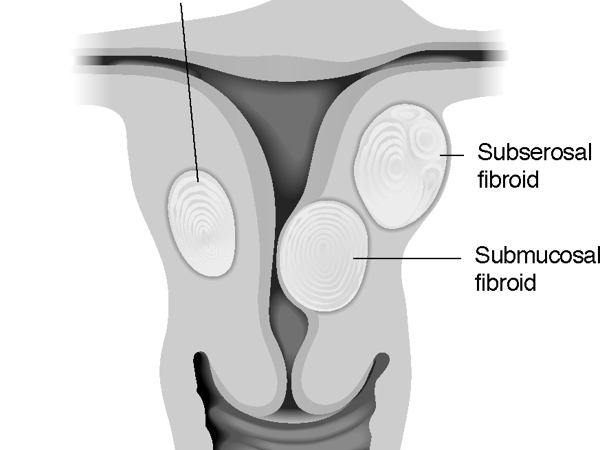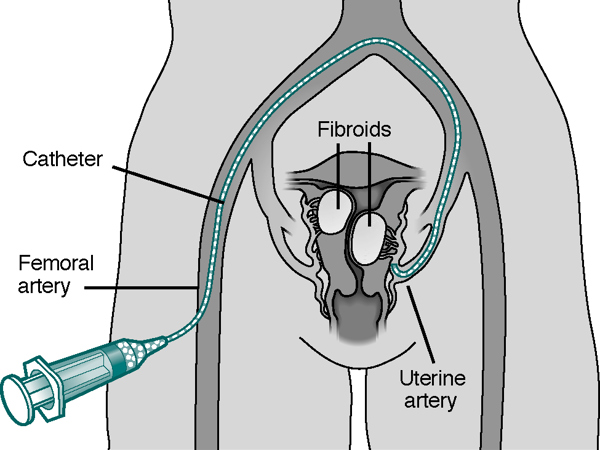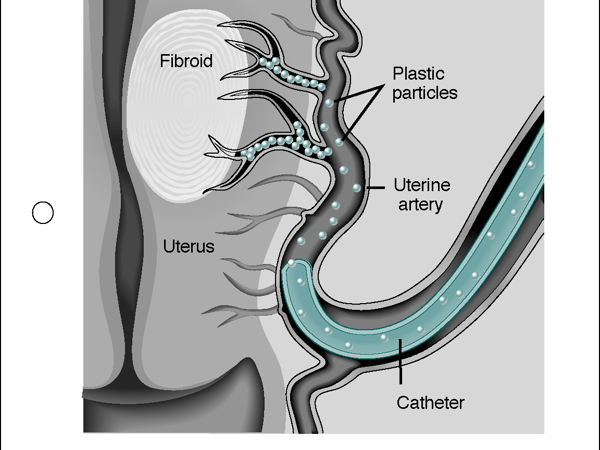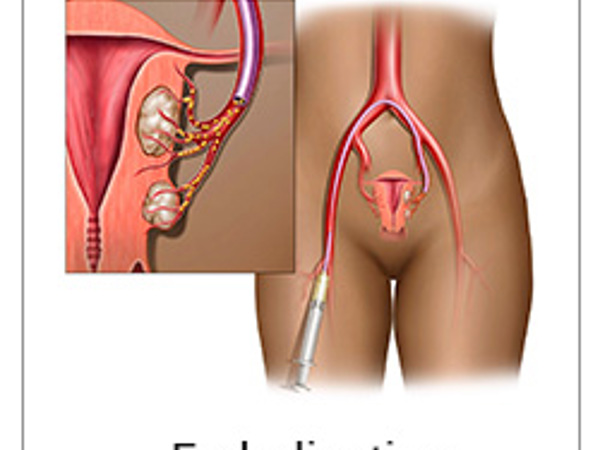For patients
Uterine fibroids
Uterine fibroid embolization avoids surgery, preserves the uterus, controls symptoms and improves quality of life.
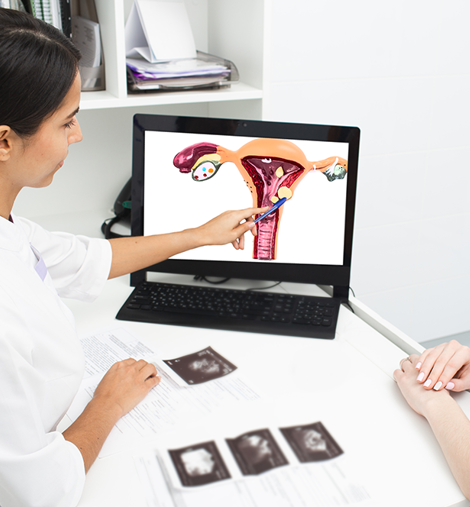
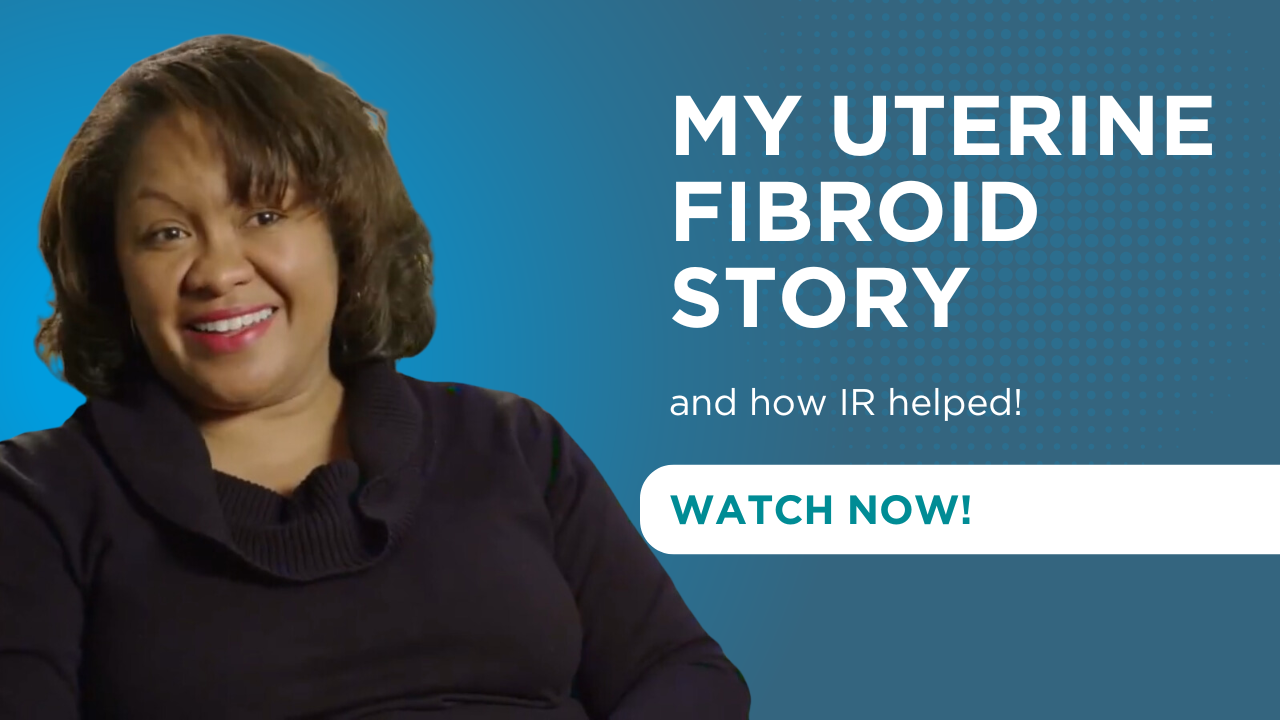
Signs and symptoms
What are uterine fibroids?
A uterine fibroid (leiomyoma) is a specific type of noncancerous growth that occurs in the muscle cells or fibrous connective tissue of the uterus and can alter a woman’s period in many different ways. Research has shown that uterine fibroids will affect 70% of white women and 80% of Black women in the U.S. by the time they are 50 years old. These growths are benign (noncancerous) tumors. You are at increased risk for developing fibroids if you are overweight or obese, African American, over the age of 40, have high blood pressure, have had no children, and have a family history of fibroids.
What are the symptoms of uterine fibroids?
- Heavy menstrual bleeding (the most common symptom)
- Uterine or pelvic pain or pressure (bloating)
- Bleeding between your periods
- Severe cramps
- Abdominal enlargement
- Pain during or following intercourse
- Pain down the back of one or both legs
- Constipation
- An urge to urinate frequently/waking multiple times a night to urinate
Because most women will not exhibit every potential symptom, diagnosis is usually confirmed by a combination of physical examination and radiology imaging of the pelvis, with ultrasound or MRI.
Minimally invasive options
How do IRs treat uterine fibroids?
Fibroids require a blood supply (for oxygen and nutrients) to continue to grow and survive. Without it, the fibroids will die. As the fibroids die, they soften and shrink, which then causes the symptoms to improve or resolve completely. To treat the uterine fibroids, an interventional radiologist (IR) can perform a treatment called uterine artery embolization (UAE), which is also referred to as uterine fibroid embolization (UFE). UFE avoids surgery, preserves your uterus, controls symptoms and significantly improves quality of life. Approximately nine out of 10 women who undergo uterine fibroid embolization will experience significant improvement, or their symptoms will go away completely.
Under X-ray guidance and sedation, the interventional radiologist can access the blood vessel carrying nutrients to the tumor through a tiny incision in the wrist or groin. The IR then guides a very thin catheter or tube (about the size of a strand of spaghetti) from the incision through your blood vessels to the specific artery supplying blood to the fibroid.
Once the catheter is in the proper position, the doctor releases small particles approximately the size of grains of sand in the targeted location to block the small vessels supplying the fibroid and deprive it of nutrients. This causes the fibroid to shrink and die, ultimately leading to symptom resolution over the coming weeks and months. There are usually two uterine arteries and each of them typically needs to be embolized to achieve a satisfactory result. When bilateral embolization is completed, the catheter is removed, and pressure or a small device is applied to the small incision to allow it to heal. The incision is so small no stitches are needed.
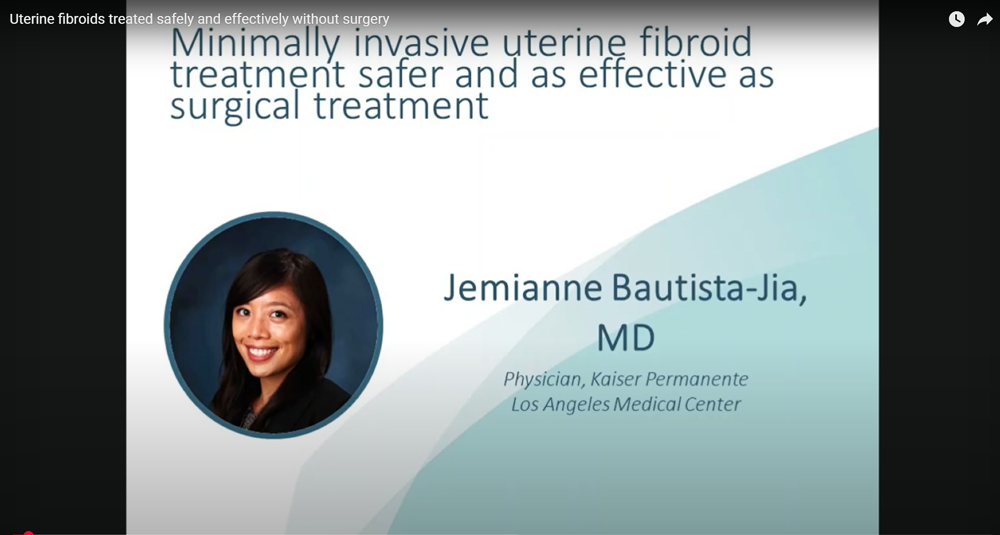
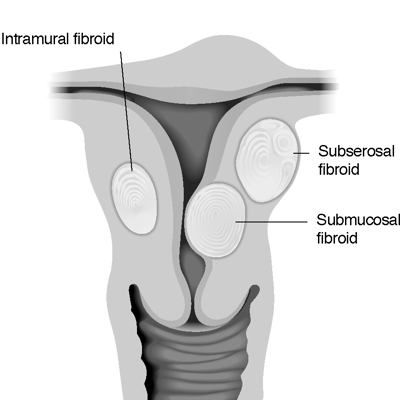
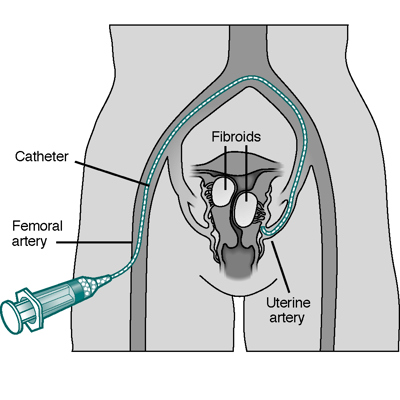
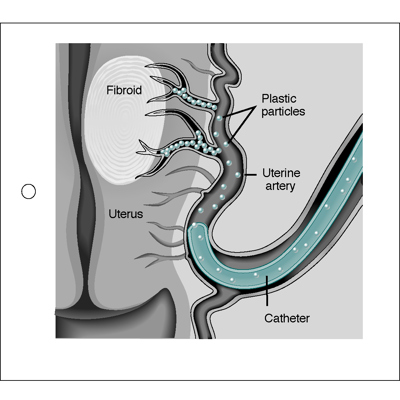
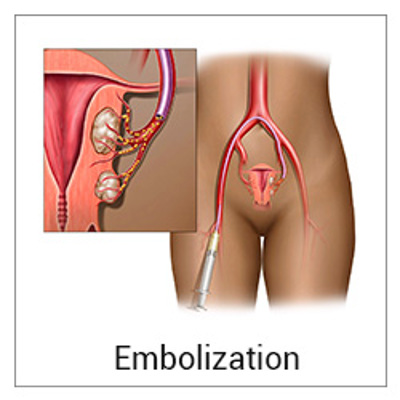
Who is a candidate for UFE?
Most women with uterine fibroids have no symptoms and don’t need any treatment at all. These fibroids are called passenger fibroids. They ride along in a woman’s uterus her whole life, and she dies with them one day never having done anything to them.
However, for many women with fibroids, their symptoms—such as heavy periods, pelvic pain, increased urinary frequency—cause them significant misery, which results in a much lower quality of life.
For women with symptomatic fibroids, UFE converts these very disruptive, living fibroids into smaller, dead passenger fibroids that will never bother the woman ever again. In addition, for women who undergo UFE in their 40s or later, it is often the only procedure they’ll ever need, as most women stop producing fibroids when they reach menopause.
Use our patient checklist to start a discussion with your OB-GYN or primary care physician about UFE and its potential to help treat your uterine fibroids. Need more information about UFE? Download our report, "The Fibroid Fix: What women need to know."
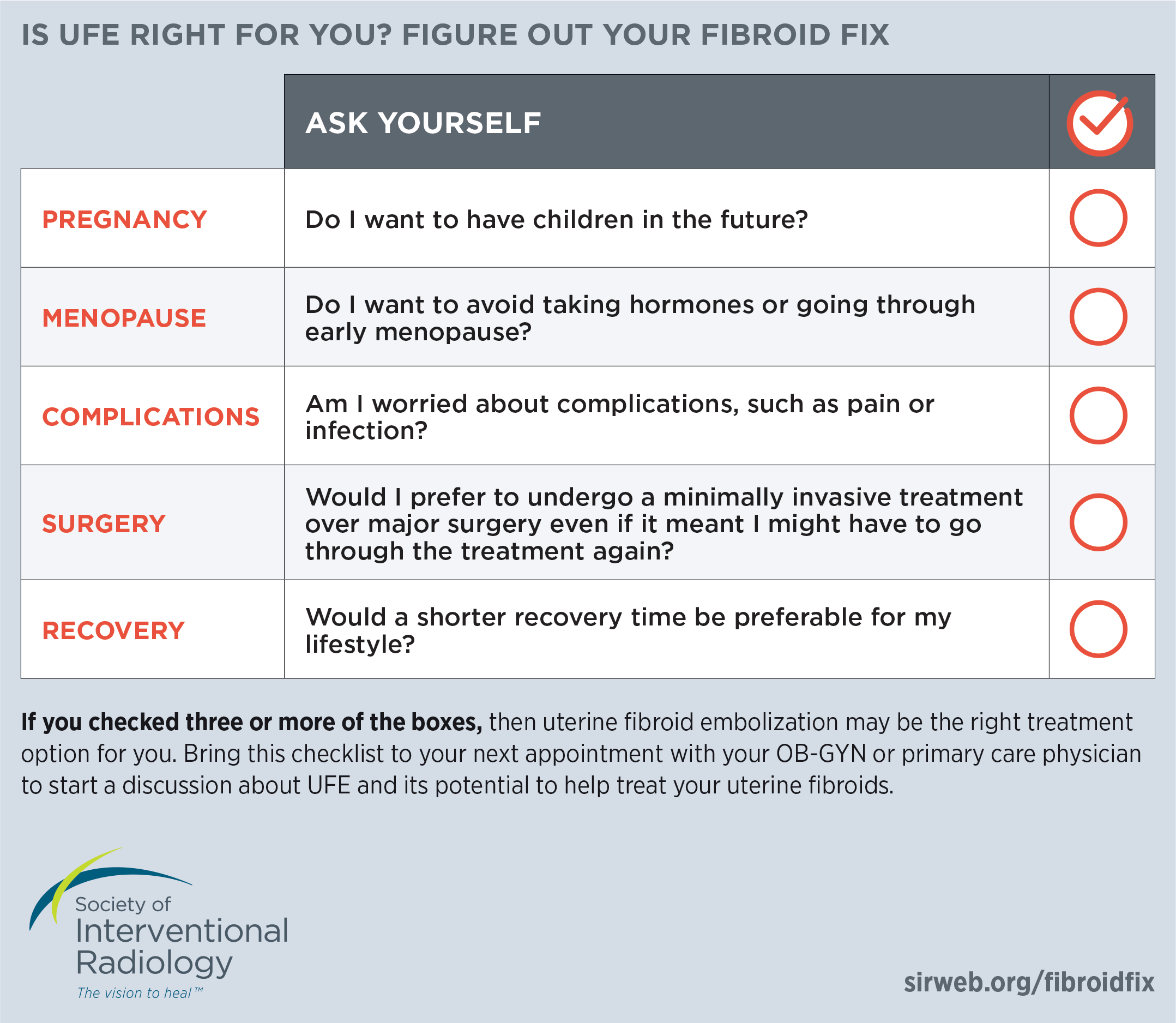
Follow-up and recovery
Life after treatment
What is the treatment’s recovery like?
UFE is an outpatient procedure, and you will be sent home the same day after several hours in recovery, with oral pain medication to help manage any post-procedure pain. In some instances, patients may be admitted overnight to manage post-procedure symptoms, but this is uncommon.
Most women return to their normal activity in about 1 week. You’ll follow up with the interventional radiologist shortly after treatment and at set intervals to ensure any pre- and post-procedure symptoms have resolved. It can take some time for the fibroids to shrink and symptoms from the large size of the fibroids to fully disappear.
As you recover, you will begin to notice improvement in your symptoms. Often, the urinary symptoms, such as increased frequency and waking at night, are the first to improve, along with reduced abdominal swelling. The first menstrual is also often improved, with subsequent cycles showing improvement over the prior cycle. The pain will also improve and resolve over the course of the first month after treatment.
You may have some cramping pain in the first couple of days after treatment, which should be easily managed with oral medications provided. Some women may experience symptoms of post-embolization syndrome, including pelvic pain and cramping, nausea/vomiting, low-grade fever, fatigue and discomfort. These symptoms usually resolve themselves and disappear within 2–7 days with additional fluid replacement, anti-inflammatory medication or other pain medications. If you any symptoms persist, reach out to your physician.
How does UFE compare to surgical treatments, such as hysterectomy or myomectomy?
UFE provides women relief from their symptoms with a shorter recovery period compared to surgery, such as hysterectomy or myomectomy. Recovery from hysterectomy can take up to 8 weeks, during which time women are severely limited in their activities. The typical recovery after UFE is 5–7 days.
Women who chose UFE spent substantially less time in the treatment room than women who chose hysterectomy (30 minutes versus 95.4 minutes) or myomectomy (30 minutes versus 109 minutes). Additionally, women who undergo UFE typically go home the day of the procedure, while those that undergo surgery typically spend several days in the hospital followed by a much more difficult recovery once they do get discharged home.
UFE is also less painful than surgeries, making it a more appealing option for many women. Additionally, UFE avoids many common side effects of hysterectomy, such as early menopause, sexual dysfunction and other side effects that can result from other treatments. While those undergoing UFE carries a small risk of inducing early menopause in women over 40, for the vast majority of women this does not occur, and normal menstrual cycles are restored and preserved.
In fact, studies have shown that 60% of women that underwent UFE who wanted to have a child, did receive a child. Those that delivered, it was typically a vaginal birth, whereas all women who deliver after myomectomy will not be allowed to have a vaginal birth (due to fear of uterine rupture) and must undergo a C-section.
I made the decision to undergo UFE, and following the treatment, my heavy cycles reduced significantly. I chose to do a second UFE treatment, which helped reduce my symptoms even more! For anyone living with uterine fibroids, I urge you to consider all your options and see if UFE is right for you. It was transformative for me, and it can be for you too.

UFE is offered nationwide.
Use SIR's Doctor Finder to search for interventional radiologists in the United States and abroad.
Reviewed by John Lipman, MD, FSIR and Nicole Lamparello, MD. September 2024
